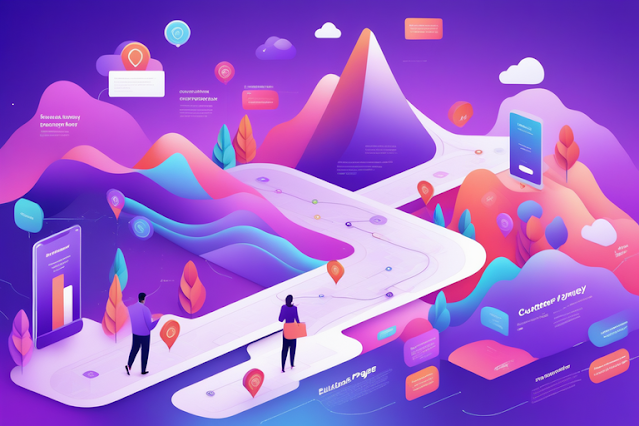How to Start Funnel Building 2024? Valuable tips to optimize your funnels, avoid common mistakes, and scale your business for growth.
In today's digital landscape, having an effective sales funnel is crucial for businesses to attract, engage, and convert customers. Whether you're a seasoned marketer or just starting out, understanding how to build a successful funnel can significantly impact your online presence and bottom line.
Funnel building is the process of creating a structured pathway for your audience to move through, from initial awareness to making a purchase or taking a desired action. It involves strategic planning, compelling content creation, and continuous optimization to guide prospects through the buyer's journey seamlessly.
Understanding the Basics of Funnels
What is a Funnel?
A funnel represents the stages a potential customer goes through before making a purchase. It typically includes awareness, interest, decision, and action stages, to convert leads into customers.
Why are Funnels Important?
Funnels provide a systematic approach to marketing and sales, helping businesses streamline their processes, nurture leads, and improve conversion rates. By guiding prospects through each stage of the buying cycle, funnels enhance customer experience and drive revenue growth.
Identifying Your Target Audience
Before diving into funnel building, it's essential to understand who your target audience is and what motivates them. Conduct thorough market research, gather demographic data, and create detailed buyer personas to tailor your funnel to their needs and preferences.
Setting Clear Goals for Your Funnel
Define specific objectives for your funnel, whether it's generating leads, increasing sales, or driving website traffic. Establish key performance indicators (KPIs) to track progress and measure success effectively.
Choosing the Right Funnel Software
With numerous funnel builders available, selecting the right software is crucial. Consider factors such as features, ease of use, integrations, and pricing to find a solution that aligns with your goals and budget.
Designing Your Funnel Structure
Map out the customer journey from awareness to conversion, outlining the steps and touchpoints along the way. Create visually appealing landing pages and intuitive navigation to guide visitors through the funnel effortlessly.
Crafting Compelling Content
Capture your audience's attention with persuasive copywriting, engaging visuals, and interactive elements. Tailor your content to each stage of the funnel, addressing pain points, benefits, and objections effectively.
Implementing Lead Capture Mechanisms
Incorporate lead capture forms, pop-ups, and incentives to capture visitor information and build your email list. Offer valuable lead magnets such as eBooks, webinars, or discounts to incentivize sign-ups.
Driving Traffic to Your Funnel
Utilize a mix of traffic sources, including organic search, social media, email marketing, and paid advertising, to drive targeted traffic to your funnel. Implement SEO strategies to improve visibility and attract qualified leads.
Analyzing and Optimizing Your Funnel
Regularly monitor your funnel's performance using analytics tools and metrics. Conduct A/B tests, analyze conversion data, and make data-driven adjustments to optimize your funnel for better results.
Scaling Your Funnel for Growth
Common Mistakes to Avoid
Avoid overcomplicating your funnel with unnecessary steps or distractions. prioritize user experience and simplify the conversion process wherever possible. Additionally, don't neglect testing and optimization, as small tweaks can have a significant impact on your funnel's performance.
Conclusion
Building an effective sales funnel requires careful planning, creative execution, and ongoing refinement. By understanding your audience, setting clear goals, and implementing best practices, you can create a powerful funnel that drives engagement, conversions, and revenue for your business.
FAQs
Q: Do I need technical skills to build a sales funnel?
- A: While technical skills can be helpful, many funnel builders offer user-friendly interfaces and drag-and-drop functionality, making it accessible to users of all skill levels.
Q: How long does it take to see results from a sales funnel?
- A: The timeline for seeing results can vary depending on factors such as your industry, target audience, and marketing efforts. With proper planning and execution, you can start seeing improvements in engagement and conversions within a few weeks to months.
Q: Can I use a sales funnel for my e-commerce store?
- A: Absolutely! E-commerce businesses can benefit greatly from sales funnels by guiding visitors through the purchase process, reducing cart abandonment, and increasing customer retention.
Q: What is the difference between a sales funnel and a marketing funnel?
- A: While both aim to attract and convert prospects, a sales funnel focuses specifically on the journey from lead to customer, whereas a marketing funnel encompasses the entire customer lifecycle, including awareness, consideration, and retention.
Q: How often should I update my sales funnel?
- A: It's essential to regularly review and update your sales funnel to reflect changes in your business, market trends, and customer preferences. Aim to conduct thorough audits and optimizations at least every few months to ensure maximum effectiveness.





Comments
Post a Comment
Leave a Comment!